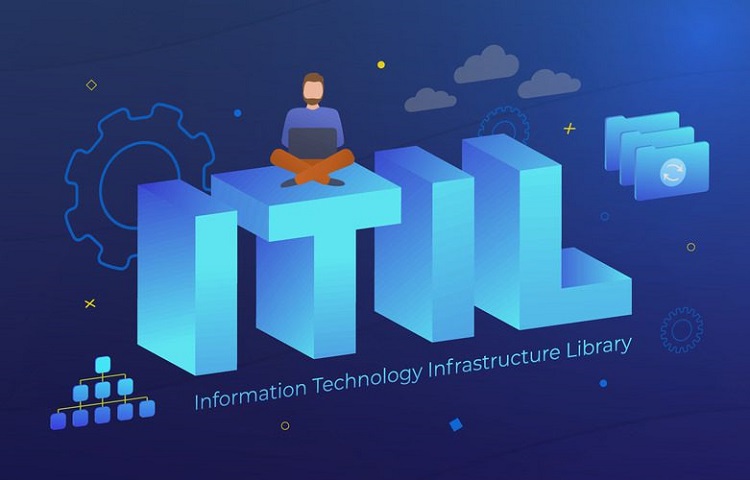In the fast-paced world of Information Technology (IT), staying ahead of the curve is not just an aspiration but a necessity. This is where ITIL, or the Information Technology Infrastructure Library, steps in as a guiding light for organizations seeking to optimize their IT service management. In this comprehensive guide, we will delve into the key processes that form the backbone of ITIL, empowering you with the knowledge to implement them effectively from the very beginning.
Introduction to ITIL
Before we dive into the intricate processes that make ITIL a game-changer, let's understand what ITIL is all about. ITIL is a set of practices that helps organizations align their IT services with their business needs. It offers a structured approach to IT service management, focusing on efficiency, effectiveness, and continuous improvement.
Service Strategy: Setting the Foundation
The first pillar of ITIL is Service Strategy. This phase is all about setting the right foundation for your IT services. Here, you determine your organization's objectives, identify potential markets, and define the services you'll offer. Key processes within this phase include:
1. Service Portfolio Management
Service Portfolio Management is the heart of your ITIL strategy. It involves managing your services throughout their lifecycle. This process helps you decide which services to invest in, enhance, or retire. By maintaining a well-structured portfolio, you can align your services with your business goals.
2. Financial Management
Effective financial management ensures that your IT services remain cost-effective and sustainable. It involves budgeting, accounting, and charging for services. When done right, it can optimize your spending and resource allocation.
3. Demand Management
Understanding and predicting the demand for your IT services is crucial. Demand Management helps you anticipate fluctuations and allocate resources accordingly, preventing over or underutilization.
Service Design: Blueprinting Excellence
Once you have a clear strategy in place, it's time to move on to Service Design. This phase is all about blueprinting the excellence you envisioned during the Service Strategy phase.
1. Service Catalog Management
A well-structured service catalog is your gateway to effective service delivery. It provides a clear overview of available services, allowing users to request what they need effortlessly.
2. Service Level Management
Service Level Management focuses on defining, monitoring, and improving service levels. It ensures that the agreed-upon service levels align with customer expectations.
3. Capacity Management
To avoid performance bottlenecks and downtimes, Capacity Management helps you plan and optimize your IT resources. It ensures that your infrastructure can handle current and future demands efficiently.
4. Availability Management
Availability Management aims to minimize service outages by proactively identifying and addressing potential issues. This process is crucial for maintaining high service availability and reliability.
Service Transition: Smooth Implementation
With your services designed to perfection, it's time to move on to Service Transition, where the real implementation magic happens.
1. Change Management
Change Management ensures that all changes to your IT environment are planned, approved, and implemented with minimal disruption. It minimizes risks and maintains service stability.
2. Release and Deployment Management
Efficient Release and Deployment Management ensures that new services or changes are smoothly introduced into your IT environment. This process aims to reduce service downtime and improve user experience.
3. Knowledge Management
Knowledge Management captures and shares valuable insights, making it easier for your IT teams to troubleshoot issues and make informed decisions.
Service Operation: The Heartbeat of ITIL
Service Operation is the phase where your IT services are up and running, providing continuous support to your organization.
1. Incident Management
Incident Management deals with unplanned interruptions or disruptions to services. It focuses on resolving incidents and minimizing their impact on your business.
2. Problem Management
Problem Management aims to identify the root causes of recurring incidents and eliminate them to prevent future disruptions.
3. Event Management
Event Management proactively monitors your IT environment for events and alerts. It helps identify potential issues before they escalate into incidents.
4. Request Fulfillment
Request Fulfillment ensures that user requests for IT services or information are processed efficiently, enhancing user satisfaction.
Continual Service Improvement: The Path to Excellence
The final piece of the ITIL puzzle is Continual Service Improvement (CSI). This phase focuses on analyzing data and feedback to make incremental enhancements to your IT services.
1. Service Review
Service Review involves assessing the performance of your IT services against predefined metrics and making necessary improvements.
2. Process Evaluation
Regular evaluation of ITIL processes ensures that they remain effective and aligned with your organization's goals.
3. Service Reporting
Service Reporting provides insights into service performance, helping you make data-driven decisions for improvement.
In conclusion, mastering ITIL is a journey that encompasses strategic planning, meticulous design, seamless implementation, and continuous enhancement. By understanding and effectively implementing these essential ITIL processes, your organization can not only meet but exceed its IT service management goals, setting the stage for lasting success in the ever-evolving IT landscape.





0 comments:
Post a Comment